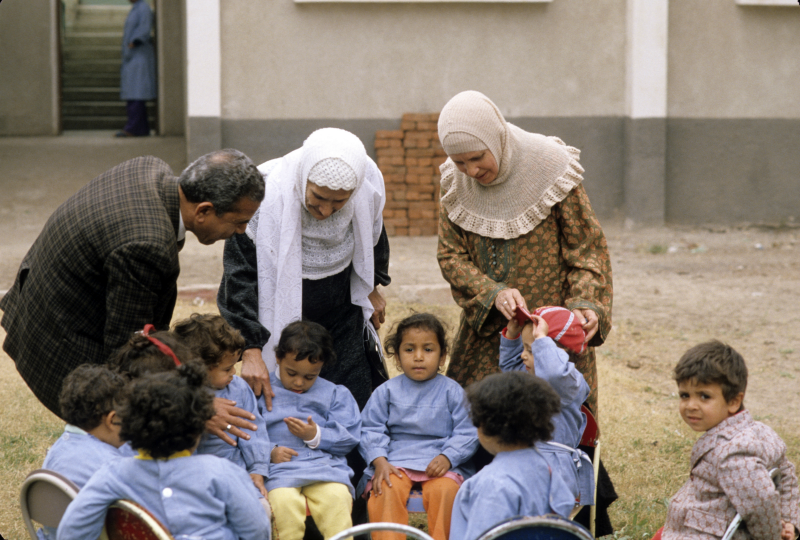
Youth and older persons are more vulnerable to social exclusion than others. Many young people live in unfavourable socio-economic environments, where they are unable to find a job and are at risk of being excluded in the labour force. Later in life, a widowed person, for example, might not have access to proper healthcare services or strong social ties, which places them at risk of being excluded from society.
This vulnerability is something that two very distinct generations -millennials and baby boomers- have in common. It is also the reason why youth and older persons are an essential part of the Sustainable Development Goals (SDGs), the UN’s agenda for a more inclusive and equal society. With the aim of fostering exchanges between these generations, on 1 August, the event Intergenerational Dialogues on the SDGs brought together representatives from all age groups to discuss the important contributions of civil society to the Agenda 2030, UN’s action plan to achieve the SDGs.
“Once you establish a goal, you have to put all your effort in achieving it, whether you are old or young”, said Mr. Maher Nasser, UN Acting Under-Secretary-General for Global Communications. During the event’s opening ceremony, Mr. Nasser reasserted the commitment towards the Agenda 2030 in front of young and ageing representatives from civil society.
Why is it important that these generations are involved with the implementation of the SDGs? To begin with, one has to remember that right now, there are around 1.8 million young persons and 900 million ageing persons in the world. By 2050 the proportion of people aged 60 years or older is expected – for the first time in history – to match that of those aged 15 years or less. These groups are important and growing collectives in society and therefore key to achieving sustainable development.
It is not purely a demographic question, though. It is also important because the SDGs will only be accomplished if we tap into the potential of both generations, young and older, that bring different attitudes and views to the table. This was the message conveyed by the President of the General Assembly, H.E Mr Peter Thomson.
In a recorded message, the UN Secretary General, António Guterres, said: “Together, you can help break cycles of poverty that have lasted for generations - and trigger a transformational change that endures for generations to come”.
Intergenerational dialogues have numerous benefits. Just think about all the institutions in our society that are mechanisms to build intergenerational bridges, such as the family unit, school or mentorship. Additionally, civil society provides valuable contributions, such as Generations United, an organization that aims at improving the lives of youths and ageing persons through intergenerational collaboration.
Dona Butts, executive director of Generations United, presented some programs that foster cooperation between the young and the ageing. Namely, a project recently started in the United States where older persons host students burdened with student loan debt in their homes for a reduced rent in exchange for social activities. This allows the older person to age in place with companionship and the young to reduce their student loans.
Jayathma Wickramanayake, the new UN Secretary-General’s Envoy on Youth, highlighted intergenerational bridges as an important factor affecting the implementation of the SDGs. “Solidarity across generations is key for social development, and for this we require new approaches in the workforce, in education, and in socioeconomic development.”
Breaking the Intergenerational Cycle of Poverty
At one of the 6 dialogues that took place on 1 August at UNHQin New York, young people and older persons from civil society discussed poverty eradication in the context of the SDGs. It is often the case that issues like marginalization, exclusion, lack of employment and education are similar between young and older persons.
Mr Hahn Choong-hee, Deputy Permanent Representative of the Republic of Korea to the UN, explained that there is often a communication gap between young and older persons and that participation of youth in decision making should be facilitated.
Patricia Talisse, a counselling graduate at Aleppo University and activist, said that often poor people suffer from a lack of information and resources needed to get out of the poverty trap.
“The struggle to bring about an end to poverty is also connected with how communities are segregated. We have to talk about inclusiveness of resources and wealth. And for this conversation, you need millennials at the table” said Cornell Brooks, former President of the National Association for the Advancement of Colored People.
Throughout the discussion representatives from civil society raised issues relating to intergenerational poverty, such as the need to include the SDGs into school curricula, the underrepresentation of poverty in media, the need for intergenerational knowledge transfer and how segregation or undercapitalisation of poor communities perpetuates a poverty trap.
Achieving the SDGs requires not only a commitment by governments but also positive contributions from all of us. This is why we need to look beyond the big actions of government and to small, everyday solutions. And judging from the discussions heard at the Intergenerational Dialogues on the SDGs, civil society is playing a key role in providing those solutions.
- For more information on DSPD’s work on ageing, please click here.
- For more information on DSPD’s work on youth, please click here.
Source: UNSDN
 Welcome to the United Nations
Welcome to the United Nations